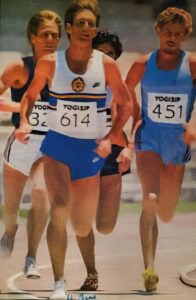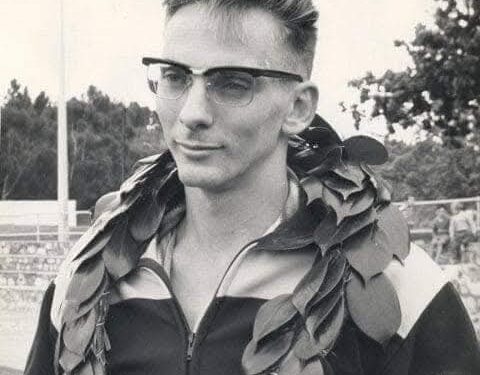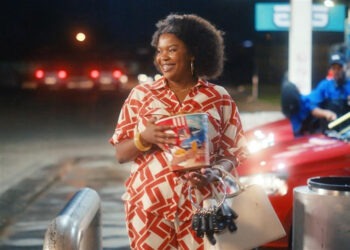 In a week when Stellenbosch again becomes the pulsing heart of South African middle-distance running, the South African Hall of Fame will induct two athletes whose names read like chapter headings in the country’s athletic history: De Villiers Lamprecht — the barefoot miler who first broke four minutes on South African soil — and Johan Fourie, a dominant force of the 1980s whose repeat sub-four performances re-wrote local records and expectations. The ceremony will take place during the 15th annual Dagbreek Street Mile on Wednesday, 15 October 2025.
In a week when Stellenbosch again becomes the pulsing heart of South African middle-distance running, the South African Hall of Fame will induct two athletes whose names read like chapter headings in the country’s athletic history: De Villiers Lamprecht — the barefoot miler who first broke four minutes on South African soil — and Johan Fourie, a dominant force of the 1980s whose repeat sub-four performances re-wrote local records and expectations. The ceremony will take place during the 15th annual Dagbreek Street Mile on Wednesday, 15 October 2025.
This is more than a ceremonial ribbon-cutting. It is a deliberate act of cultural memory — a halting, reverent moment that fixes a generation’s feats into national story and hands a compass to the next. For South Africa, where running has been a rare and potent arena for global competitiveness and local pride, the inductions honour achievement and insist upon legacy.
Lamprecht: the barefoot dreamer who made history
On 13 November 1964, at Coetzenburg in Stellenbosch, De Villiers Lamprecht became the first South African to run a dream mile — a mile under four minutes — clocking 3:59.7. More than a statistic, the run is iconic because Lamprecht did it barefoot, a singular feat frequently noted in historical accounts of the era. He went on to break the four-minute barrier multiple times, set some 15 South African records across distances from the 1500m to the marathon, and later served as an influential coach and mentor to younger athletes. Lamprecht died on 1 December 2024, leaving a legacy that remains closely tied to Stellenbosch and to the street-mile culture that the Dagbreek event celebrates.
Lamprecht’s story is a study in contrast — an athlete who ran with a humility that belied extraordinary talent, who chose the simplest footwear or none at all, and who translated personal achievement into decades of coaching and community involvement. The Dagbreek Street Mile — an event born of Stellenbosch’s affection for the mile — is fittingly the venue to immortalise him.
Fourie: relentless, record-laden, and peerless on home soil
If Lamprecht wrote the first South African sub-4 footnote, Johan Fourie authored many of the following chapters. Fourie’s career in the late 1970s and 1980s saw him dominate domestic middle-distance running: his mile personal best of 3:50.82 (1987) stood as the country’s benchmark for decades; he amassed dozens of sub-four-minute miles in his career, and he won nine consecutive national 1500m titles (1979–1987). World Athletics documents his 1500m best (3:33.87) and mile best, underscoring the level of performance he produced even though international competition opportunities were constrained by the sporting isolation of apartheid South Africa.
Fourie’s feats include a statistic that reads like myth and then like fact: at one meet he produced two dream miles inside a single hour — a demonstration of both speed and phenomenal recovery — a claim frequently repeated in athletics histories of the era and referenced in contemporary summaries of his career. Whether counted as 53, 56 or more sub-four mile performances (different sources use slightly different tallies), the core truth remains: Fourie produced depth of excellence at a sustained level unmatched in South African middle-distance running. He remains active in Stellenbosch as a mentor and through Dogsquad, the group associated with his coaching and training legacy.
Why a street mile? Why now?
The Dagbreek Street Mile — established to honour Lamprecht and to bring middle-distance running into the streets and the public eye — has become a showcase of history, pageantry and pathfinding. It is both grassroots spectacle and elite performance platform. The event is intimately linked to the local track culture at Coetzenburg and to Stellenbosch’s deep tradition of producing elite runners. By staging the Hall of Fame induction alongside the race’s 15th anniversary, organisers create a narrative arc: from Lamprecht’s first sub-4 mile on campus to the present moment when those achievements are curated, commemorated and used to inspire the next generation.
For a country still wrestling with youth unemployment and social fragmentation, sporting memory plays a practical role. It creates role models, lighting a pathway from school teams to national pride and, sometimes, to global participation. The Hall of Fame’s mission — Celebrate | Inspire | Empower — is thus not mere rhetoric. Through bursaries, legacy projects and public storytelling, it tries to translate individual heroics into wider opportunity.
What the records don’t show
Numbers — times, records, sub-4 counts — are the bones of athletic history. The flesh comes from human context: Lamprecht’s barefoot runs that impressed a nation; Fourie’s near-obsessive training and his refusal to allow national isolation to fully define his career. The public remembers Lamprecht’s humility and Fourie’s relentless pursuit of marginal gains; the athletes and coaches remember late nights at Coetzenburg, the smell of cinders, the tiny adjustments that change seconds into records. These are the textures that turn dry statistics into stories capable of moving a stadium and a country.
Legacy, learning and local impact
The inductions are neither endpoint nor nostalgia. They are a fulcrum. The Hall of Fame uses these moments to seed educational and funding efforts — bursaries and projects aimed at talented youth who lack means — and to encourage local clubs, universities and schools to retain the sport’s infrastructure and coaching expertise. In practice, this can mean better track maintenance, more accessible coaching, integration of athletics into school curricula, and partnerships between events like the Dagbreek Street Mile and development programmes.
For Stellenbosch, the Hall of Fame’s programme underscores a larger truth: that sustained excellence requires ecosystems — coaches, facilities, funding, medical support and institutional memory. Honouring Lamprecht and Fourie is a reminder that greatness is rarely made in isolation.
Two icons, one continuing story
On 15 October 2025, the Dagbreek Street Mile will be a race, a reunion and a ceremony. De Villiers Lamprecht and Johan Fourie will join a roll call intended to preserve and project South Africa’s sporting memory. Their runs — Lamprecht’s barefoot sub-4 and Fourie’s relentless production of dream miles — are more than historical curiosities. They are narrative engines: fuel for young athletes who will lace up and chase a mile, and for a public that will find in their careers something to celebrate, emulate and use as scaffolding for future triumphs.
The Hall of Fame’s induction will not make records run faster. But it can help keep the culture that produces records alive: by telling the stories, awarding the honours, and investing the proceeds into the young people who need examples and opportunity. On the streets of Stellenbosch this October, history will be both celebrated and put back to work.



































